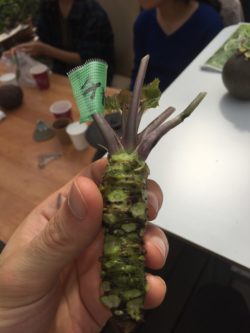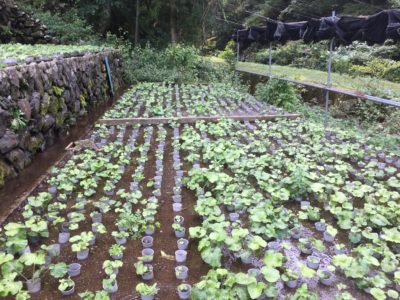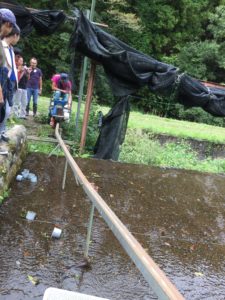
November 28, 2017
By Charlie James
Charlie is a graduating senior of the Food Systems minor and the Haas School of Business.
For my final semester I decided to study abroad in Japan, where my mother was born and raised, to learn the language and finally have a comprehensible conversation with my Japanese family. My Japanese grandmother has a natural (ecology-based) Mikan (tangerine) orchard and vegetable farm, and through the Food Systems minor, particularly Miguel Altieri’s class on Agroecology (ESPM 118) and Kathryn De Master’s class on food systems (ESPM 155), I was able to appreciate and understand the ecology of the farm and what it means to practice natural farming in a whole new way. Further, with the critical lens for analyzing food systems I’ve developed through my education in the minor, I’m seeing a Japan I never would have known.
During the few months I’ve been at Tsuru University, Yamanashi Prefecture (two hours west of Tokyo), I’ve already been fortunate enough to make a number of unforgettable memories. One of the memories is a tour of Tsuru’s “secret” places provided by the Social Welfare Corporation (Asunaronokai Mitooshi). The first place I visited was a wasabi farm.

The root of the Wasabi plant, from which the spicy green Wasabi paste is made.
For those who are unaware, wasabi (also known as Japanese horseradish) is that green spicy paste that usually comes with sushi packages, located next to the pickled ginger. It is in the same family as horseradish and mustard (Brassicaceae), is usually sold in squeezable tubes, and can be very spicy.
At the wasabi farm, the grower gave me and a small group of other students a tour. Wasabi is one of the most difficult plants to grow and is said to require a constant stream of water. By the use of terrace farming, this farm effectively guides water flow to provide for a large growing area. This particular stream of water comes from Mount Fuji and is pure enough to drink, and people do. There was an outlet on the side of the road on the way to the farm, from which anyone can stop by and have a fresh drink of Mount Fuji spring water. I did and, to say the least, it was refreshing.

Wasabi plants growing through a terrace farming mechanism that sources water from Mount Fuji.
There is also a cart built into this farm to load wasabi on during harvest. It operates on a single metal bar next to the staircase in the picture to the right. The farmer only grows wasabi and sells one for around ¥1100, which is about $9.67 measured at the current exchange rate. I was able to taste one and the flavor was surprisingly distinct from the common wasabi tubes; it seemed like a different plant altogether.
The next place I got to visit on this tour was a fishery. In this particular fishery, the water flow is circumvented from a parallel running stream to provide a constant stream of water for the fish. The Ito fish is one of the various types of fish raised on-site. The Ito fish, (also known as Sakhalin taimen and Japanese huchen) from the Salmon family (Salmonidae), is endangered, can grow up to 2 meters in length, and usually grows north of Hokkaido, Japan’s northernmost island. Considering the

Students tour a fishery that circumvents water flow from a parallel running stream.
difference in climate from north of Hokkaido to as far south as Tsuru, the fact that Ito fish are raised in this location is most unexpected. The local fish grower said that a single Ito fish can be sold for around ¥10,000, which is about $88. With such valuable fish swimming around, I was surprised to find cats as well. They were sitting on the ledge of one of the pools staring at the fish. Apparently, we weren’t the only ones enjoying the tour.
Coming to Tsuru, I did not expect to find such unique food growing spaces. If I had not taken the food systems minor, I would not have understood the uniqueness of these spaces. Lastly, I wouldn’t have had the chance if it wasn’t for my amazing program with UC Education Abroad Program, Tsuru University, the Social Welfare Corporation, and, of course, the cooperating wasabi and fish growers. Without notice from the tutors in my program, I would have missed this chance. As such, I’m deeply grateful to all these organizations and their participants, and I can’t help but wonder how many other amazing growing spaces there are if one looks.
A larger list of all the study abroad opportunities in Japan for UC students is attached here.